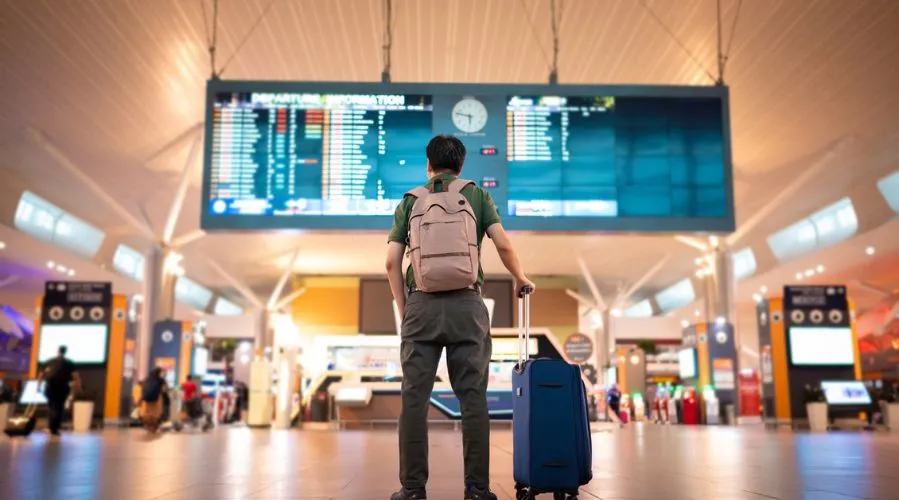With nearly 72 million foreign visitors in 2022, the Kingdom of Spain remains one of the top tourist destinations on the planet today. Madrid, Barcelona, Ibiza, and the Canary Islands are among its most popular go-tos for vacationers. But there are also lesser-known gems like San Sebastián, Granada, and Seville.
Spain is home to the world’s oldest restaurant (Casa Botín in Madrid), the highest number of bars per capita in the EU, one of the longest coastlines in Europe (and, therefore,3,000+ beaches), and the world’s fourth-largest number of UNESCO World Heritage Sites.
And the now world-famous 500-mile pilgrimage of Camino de Santiago alone attracts tens of thousands of people from all over the world annually.
In short — from tapas to Flamenco to football to siestas — the country is rich in history, breathtaking natural and urban landscapes, and a distinct culture like no other. And if you plan to be one of the hundreds of thousands of Indian citizens who visit Spain each year, here’s what you should know.
- Do I need a visa to go to Spain from India?
- How much does a Schengen visa from India cost?
- What documents do I need to apply for a Schengen visa from India?
- When and where should I apply for a Schengen visa if I live in India?
- Do I need travel insurance to apply for a Schengen visa from India?
- How can AXA help?
- How to apply for other Schengen countries from India ?
- Related topics
- Frequently asked questions about Spain visas from India
Do I need a visa to go to Spain from India?
Yes. Spain is one of the 27 countries in the Schengen zone. That means that if you are an Indian passport holder, you will need a Schengen visa to enter its borders. And this includes Indian citizens who are legal residents of Australia, Canada, the U.K., and the U.S., as well as Indian Green Card holders.
The most common type of Schengen visa is the short-stay (aka Type C) visa. It allows travel to Spain — as well as all 27 Schengen countries — for up to 90 days in any 180-day period. But you can learn more about which Schengen visa suits your needs best here.
How much does a Schengen visa from India cost?
- A standard Schengen visa for Spain costs €80.
- For children between the ages of six and twelve, the fee is €40.
- Children under the age of six can get a Schengen visa for free.
- In some cases, the fee may also be waived for:
- participants in certain seminars, conferences, sporting, cultural, and/or educational events (25yo or under);
- students/teachers on certain study and/or training trips;
- certain professionals traveling for the purpose of scientific research.
NOTE: While Schengen visa costs are universal, you may also have to pay extra administrative and/or service fees associated with your visa center and/or the corresponding officials. Visa fees are not reimbursed if your visa is refused.
What documents do I need to apply for a Schengen visa from India?
Here’s what paperwork you’ll need when applying for a Schengen visa from India:
- a Schengen Visa application form
- two passport photos (taken within the last three months)
- your passport (issued less than 10 years ago, valid for at least three months after your planned date of departure from the Schengen territory, and with at least two blank pages)
- a photocopy of the passport page (or pages) with biometric data (if applicable)
- travel and medical insurance (covering you up to costs of €30,000)
- your full travel itinerary
- proof of paid visa fee (IMPORTANT: your application will not be processed if you don’t include the receipt from the required visa fee)
- proof of sufficient financial means (for your entire stay in the Schengen area)* *NOTE: As of 2023, the minimum amount required is 108€ per person per day
- proof of accommodation (for your entire stay in the Schengen area)
- a letter of invitation (if applicable)
DO NOT staple any of the documents. And have some extra A4-size copies of everything too — just in case.
NOTE: While AXA is doing its best to provide you with the most reliable and updated information available, be aware that the Spanish embassy/consulate may modify its visa rules and regulations at any time. Consequently, AXA can not be held accountable for such changes. So always be sure to check with the appropriate embassy or consulate as to the most recent terms and conditions in effect at the moment of the submission of your visa application.
IMPORTANT: You can also always double-check with and/or reach out to the official website of the Embassy of Spain in India regarding any doubts about your Schengen visa to Spain application process. And make sure to review the “Updated info for Schengen visa applicants in India” section too!
When and where should I apply for a Schengen visa if I live in India?
Your Schengen visa application should be submitted no earlier than six months and no later than 15 days before your departure date. But give yourself plenty of time to prep all the documents above too.
There are two Spanish authorities where you can apply for a visa for Spain in India:
- The Spanish Embassy in New Delhi, with jurisdiction in Bhutan, Maldives, Nepal, and Sri Lanka, and the Indian territories of Jammu and Kashmir, Uttar Pradesh, Arunachal Pradesh, Himachal Pradesh, Madhya Pradesh, Nagaland, Punjab, Bihar, Meghalaya, Chandigarh, Jharkhand, Manipur, Uttarakhand, West Bengal, Tripura, Haryana, Odisha, Mizoram, Delhi NCR, Sikkim, Lakshadweep Island, Rajasthan, Ladakh, Assam, and the Andaman and Nicobar archipelagos.
- The consulate general in Mumbai, which deals with citizens residing in Andhra Pradesh, Chhattisgarh, Goa, Gujarat, Karnataka, Kerala, Maharashtra, Tamil Nadu, Dadra and Nagar Haveli, Daman and Diu, and Puducherry and Telangana.
The Spanish authorities also delegate Schengen visa applications for Indian nationals to the company BLS International.
You can also learn more about where to apply for a Schengen visa from India here.
After scheduling an appointment, you will be asked to submit your application in person. During this interview, your biometric data (fingerprints and scanned photos) will be collected, and you will be asked to pay the visa application fee.
Do I need travel insurance to apply for a Schengen visa from India?
Yes. As stated above, you will need travel insurance to be granted a Schengen visa from India. And this goes for Spain and any of the other 26 Schengen states you wish to visit.
Your plan must have a minimum coverage of €30,000 in case of medical care, hospitalization, and/or medical repatriation.
It must also be accepted by all 27 countries within the Schengen zone. And it must be valid for the entire duration of the visa's validity.
How can AXA help?
That’s where AXA comes in. AXA offers you three comprehensive Schengen travel insurance plans — all of which meet the mandatory requirements for obtaining a Schengen visa to Spain.
Purchasing an AXA plan is quick and easy and can be done online in a matter of minutes. And the AXA travel insurance certificate — accepted by all Schengen member countries’ embassies and consulates — can be downloaded (and/or printed) online instantly.
Moreover, in most circumstances, AXA will refund your insurance fees if your visa is refused. We’ll only ask that you provide official documentation — from the relevant embassy, consulate, or visa application center — explaining why your visa was refused.
In other words, AXA can help bring you one big step closer to your journey from India to Spain — or anywhere else in the Schengen zone for that matter. Plus, with the right Schengen travel insurance by your side, that journey is sure to be safer, more worry-free, and overall more bueno.
How to apply for other Schengen countries from India ?
- Apply for Switzerland visa from India
- Apply for Germany visa from India
- Apply for Greece visa from India
- Apply for France visa from India
- Apply for Czech Republic visa from India
- Apply for Belgium visa from India
- Apply for Italy visa from India
- Apply for Netherlands visa from India
- Apply for Portugal visa from India
- Apply for Denmark visa from India
- Apply for Iceland visa from India
Related topics
- How much time does it take to proceed a Schengen visa for India ?
- How much does a Schengen visa cost from India ?
- Where to apply for a Schengen visa in India ?
Frequently asked questions about Spain visas from India
Where should I apply for a Schengen visa for Spain if I live outside of India?
You should apply at the Spanish embassy, consulate, and/or corresponding visa center in the country where you legally reside.
How long does it take to process my Schengen visa application in India?
It generally takes at least 15 days to process a Schengen visa. However, it may take some embassies up to one or even two months — depending on your particular situation and various other factors (the time of year, holidays, etc.).
Will my visa allow me to travel to other European countries?
Yes. During your stay in Spain you will — in most cases — be able to visit other European countries if they are part of the Schengen area.
Which consulate should I apply to if I am traveling to multiple countries?
You should apply to the Schengen country where you’re planning to spend most of your trip. If you’re staying an equal amount of days in two (or more) countries, apply to the country you plan to enter first.
AXA already looks after millions of people around the world
With our travel insurance we can take great care of you too
AXA Schengen's Travel Insurances

AXA Schengen Basic
AXA Schengen Basic is perfect to obtain your Schengen visa. This travel insurance meets all the requirements demanded, covers you in all the countries of the Schengen Area as well as 4 European microstates (Andorra, Vatican City, Monaco and San Marino).

AXA Schengen Essential
AXA Essential is perfect to obtain your Schengen visa. It provides coverage in all Schengen countries + the European microstates + all the EU countries (including UK, Cyprus, Bulgaria, the Republic of Ireland and Romania). And you get additional guarantees compared to AXA Schengen Basic.

AXA Schengen Annual
AXA Annual is perfect to obtain your Schengen visa. This annual travel insurance is ideal for those who often travel to Europe as well as multiple-entry Schengen visa holders. You get the same guarantees as AXA Schengen Annual for different countries during 90 days.


